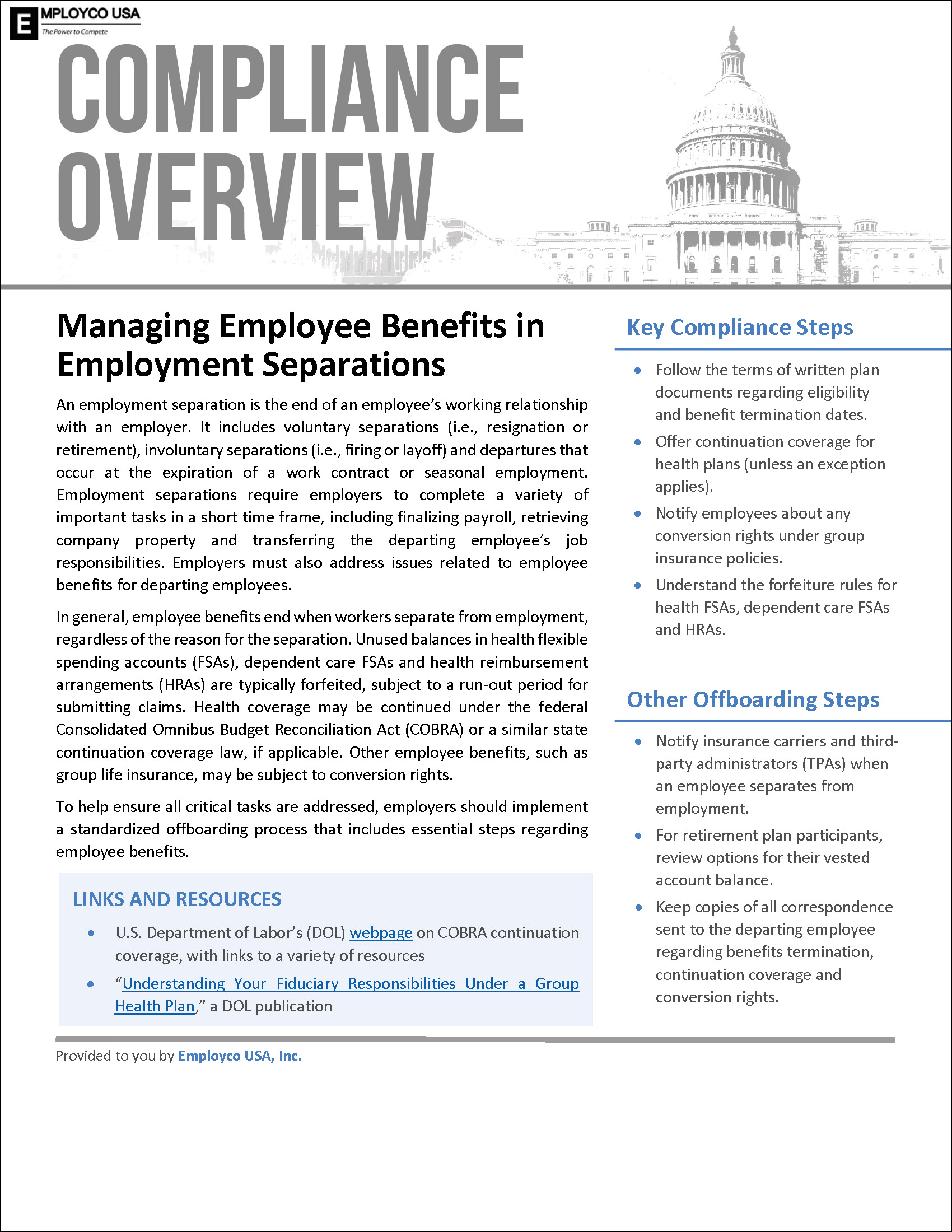
An employment separation is the end of an employee’s working relationship with an employer. It includes voluntary separations (i.e., resignation or retirement), involuntary separations (i.e., firing or layoff), and departures that occur at the expiration of a work contract or seasonal employment. Employment separations require employers to complete a variety of important tasks in a short time frame, including finalizing payroll, retrieving company property, and transferring the departing employee’s job responsibilities. Employers must also address issues related to employee benefits for departing employees.
In general, employee benefits end when workers separate from employment, regardless of the reason for the separation. Unused balances in health flexible spending accounts (FSAs), dependent care FSAs, and health reimbursement arrangements (HRAs) are typically forfeited, subject to a run-out period for submitting claims. Health coverage may be continued under the federal Consolidated Omnibus Budget Reconciliation Act (COBRA) or a similar state continuation coverage law, if applicable. Other employee benefits, such as group life insurance, may be subject to conversion rights.
To help ensure all critical benefit plan tasks are addressed, we released a new Compliance Update article on this topic: Managing Employee Benefits in Employment Separations.
